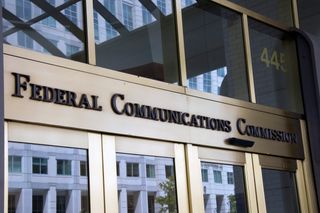FCC to Free Up 2.5GHz for 5G

It is rush hour on the spectrum auction info highway over at the FCC these days.
FCC Chairman Ajit Pai has circulated a report and order for a vote at the July public meeting that will open up midband spectrum in the 2.5 GHz band for 5G. It is currently used, the FCC says underused, by educational broadband services (EBS).
"At long last, we’re going to put more of this critical mid-band spectrum to work for the American people," Pai blogged about the item. "This is the single largest band of contiguous spectrum below 3 GHz, but much of this public resource has been unused for decades."
The item will provide opportunities for rural areas to get access to unused midband spectrum for mobile broadband.
Related: Cities Tell FCC to Stop Scapegoating Them on 5G
The order will give incumbents more flexibility for use and for additional entities to access the spectrum.
It eliminates eligibility, use requirements and leasing restrictions on the band, creates a local priority filing window for tribal nations for early access to unfettered spectrum before any commercial entity gets access, and would establish a competitive bidding window and auction for commercial entities, with aggressive buildout requirements.
Multichannel Newsletter
The smarter way to stay on top of the multichannel video marketplace. Sign up below.
Educational users with the licenses can continue to use it, transfer it to someone else, or use it for something else. It is entirely up to them, said the officials
Removing restrictions on who may use the spectrum for what, freeing up the current unused spectrum in the band--about half the geographic area of the country--with tribes getting first dibs, then auctioning off the remaining "white spaces" of spectrum is the plan
The report and order will establish county-size licenses (rather than modify each existing license to include all census tracts in a covered geographic area), and there will be no priority window for educational institutions because making them flexible-use licenses is the fastest way to get spectrum freed up for 5G, said the officials
Tribal nations will likely not be bidding against each other because they will be applying for spectrum in their tribal lands.
The FCC last year approved a notice of proposed rulemaking (NPRM) looking into opening up the 2.5-GHz band for wireless broadband, but not without pushback from some educational broadband services (EBS) that use the band
The item was billed as creating "more efficient and effective use of 2.5-GHz spectrum by increasing flexibility for existing EBS licensees and providing new opportunities for educational entities, rural Tribal Nations, and commercial entities to access unused portions of the band.
EBS, formerly Instructional Television Fixed Service, or ITFS, was used in the 1960s for closed-circuit broadcasts to educational institutions, but was rebooted in the early 2000s and pointed toward broadband.
The FCC has midband, lowband and unlicensed spectrum plans in the works, but most of the action has been in the high band, where the FCC has auctioned 28 GHz band spectrum and 24 GHz spectrum this year and will auction the upper 37 GHz, 39 GHz, and 47 GHz bands beginning in December, all totalled releasing almost 5 GHz of spectrum into the market, or more than all other flexible-use bands put together, the FCC points out
But the FCC has been under pressure to get moving on midband, a box the 2.5 GHz auction item checks off.
The draft report and order will be released June 19 for consideration at the July 10 meeting.
Contributing editor John Eggerton has been an editor and/or writer on media regulation, legislation and policy for over four decades, including covering the FCC, FTC, Congress, the major media trade associations, and the federal courts. In addition to Multichannel News and Broadcasting + Cable, his work has appeared in Radio World, TV Technology, TV Fax, This Week in Consumer Electronics, Variety and the Encyclopedia Britannica.

